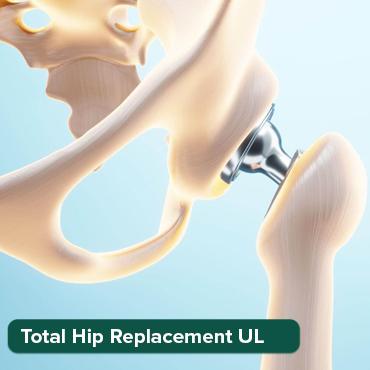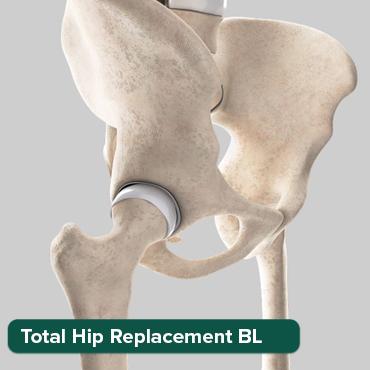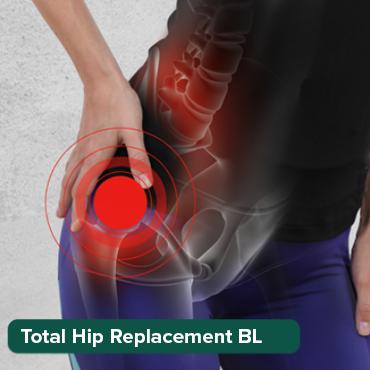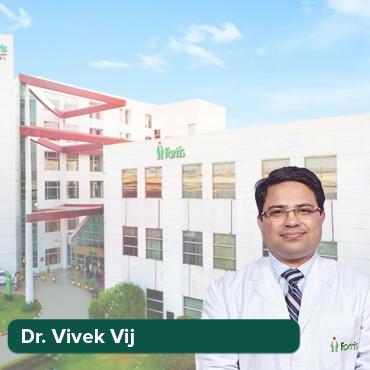
Long-Term Follow-Up After Spine Surgery
30 Oct, 2025
 Healthtrip
Healthtrip- Who Needs Long-Term Follow-Up After Spine Surgery? < li>Where Can You Receive Long-Term Follow-Up Care?
- Why is Long-Term Follow-Up Important?
- What Does Long-Term Follow-Up Involve? < li>How to Prepare Yourself For Long Term Follow Up?
- Examples of Successful Long-Term Spine Surgery Outcomes
- Conclusion
The Importance of Regular Post-Operative Check-Ups
Regular post-operative check-ups are absolutely vital after spine surgery, serving as a crucial line of defense against potential complications and ensuring that you're healing as expected; these appointments, scheduled with your surgeon at hospitals like Hisar Intercontinental Hospital in Istanbul, are far more than just routine visits. They offer a valuable opportunity to monitor your progress, address any concerns you might have, and make necessary adjustments to your treatment plan. During these check-ups, your surgeon will assess your incision site for signs of infection, evaluate your neurological function, and review imaging studies like X-rays or MRIs to visualize the healing process of your spine. These visits also provide a chance to discuss pain management strategies, physical therapy progress, and any lifestyle modifications that might be beneficial. Think of these follow-up appointments as a collaborative effort between you and your medical team, working together to optimize your recovery and safeguard your long-term spinal health. Ignoring these appointments is like skipping oil changes on your car – it might seem okay in the short term, but it could lead to serious problems down the road.
Most popular procedures in India
What to Expect During Your Follow-Up Visits
Each follow-up visit after spine surgery at places like Yanhee International Hospital in Bangkok typically involves a comprehensive evaluation of your overall health and spinal condition, it’s not just a quick chat and a pat on the back! Your surgeon will start by asking about your current symptoms, pain levels, and any new issues you might be experiencing - honesty is key here, even if it feels insignificant, share it!. They’ll then conduct a physical examination to assess your range of motion, muscle strength, reflexes, and sensation. The incision site will be carefully inspected for signs of infection, redness, or swelling; depending on the type of surgery and your individual progress, imaging studies may be ordered to evaluate the alignment of your spine and the healing of the surgical site. Your surgeon will also review your medication list and make any necessary adjustments to manage pain or other symptoms; this is your chance to ask questions, voice concerns, and actively participate in your care. Don't be shy about bringing up anything that's on your mind – no question is too small or silly. Remember, you're the driver of your recovery journey, and these visits are designed to keep you on the right track.
Wellness Treatments
Give yourself the time to relax
Lowest Prices Guaranteed!

Lowest Prices Guaranteed!
Managing Pain and Discomfort Long-Term
While spine surgery aims to alleviate chronic pain, some level of discomfort is common even months or years after the procedure, managing this long-term pain effectively is key to maintaining a good quality of life, maybe with the help of doctors at Memorial Sisli Hospital. It's not about eliminating pain entirely, but rather finding strategies to control it and prevent it from interfering with your daily activities. A multi-faceted approach is often the most successful, combining medication management with lifestyle modifications and complementary therapies. Your surgeon at places like Thumbay Hospital in Dubai or pain management specialist can prescribe medications to reduce inflammation, relieve nerve pain, or relax muscle spasms which are very helpful, be sure to follow their instructions carefully and report any side effects. Regular exercise, especially low-impact activities like walking, swimming, or cycling, can help strengthen your back muscles, improve flexibility, and reduce pain. Physical therapy plays a crucial role in restoring proper movement patterns and preventing future injuries. Mind-body techniques like yoga, meditation, and deep breathing exercises can also be effective in managing pain and promoting relaxation. Remember, pain management is a marathon, not a sprint; it requires patience, persistence, and a willingness to explore different options to find what works best for you.
Exploring Non-Pharmacological Pain Relief Options
Beyond medication, there are numerous non-pharmacological approaches to pain relief that can be incredibly beneficial after spine surgery; these options often have fewer side effects than medications and can empower you to take a more active role in managing your pain. Physical therapy is a cornerstone of non-pharmacological pain management, helping you regain strength, flexibility, and proper posture and maybe some experts at Helios Klinikum Erfurt can help you get started!. Techniques like massage, acupuncture, and chiropractic care can also provide relief from muscle tension and pain; mind-body therapies like yoga, tai chi, and meditation can help you reduce stress, improve relaxation, and enhance your body's natural pain-relieving mechanisms. Some people find relief through alternative therapies like herbal remedies or dietary changes, although it's essential to discuss these options with your doctor to ensure they're safe and appropriate for you. Heat and cold therapy can also be used to manage pain and inflammation – heat can relax muscles and increase blood flow, while cold can reduce swelling and numb pain. Ultimately, the best approach is to experiment with different options and find a combination that works well for you; it can be a journey to find the right combination and it can be started with a consultation at Quironsalud Hospital Murcia.
The Role of Physical Therapy and Rehabilitation
Physical therapy and rehabilitation are indispensable components of long-term recovery after spine surgery; they're not just about getting you back on your feet – they're about building a strong foundation for a healthy, active future. A well-structured physical therapy program, such as one at Fortis Memorial Research Institute in Gurgaon, can help you regain strength, flexibility, balance, and coordination, all of which are crucial for protecting your spine and preventing future injuries. Your physical therapist will work with you to develop a personalized exercise plan that addresses your specific needs and goals. This plan may include stretching exercises to improve flexibility, strengthening exercises to support your spine, and aerobic exercises to enhance your overall fitness. Your therapist will also teach you proper body mechanics and posture to minimize strain on your back during daily activities; throughout your rehabilitation, your therapist will closely monitor your progress and make adjustments to your plan as needed. Think of physical therapy as an investment in your long-term well-being, helping you live a more comfortable, active, and fulfilling life after spine surgery.
Exercises and Activities to Promote Spinal Health
Engaging in regular exercise and activities that promote spinal health is crucial for maintaining long-term well-being after spine surgery; it's not about becoming a marathon runner, but rather incorporating simple, sustainable habits into your daily routine. Low-impact aerobic exercises like walking, swimming, and cycling are excellent choices for improving cardiovascular health and strengthening your back muscles; core strengthening exercises, such as planks, bridges, and abdominal crunches, can help stabilize your spine and reduce the risk of injury, maybe you can learn these at KPJ Ampang Puteri Specialist Hospital in Kuala Lumpur. Stretching exercises, like hamstring stretches, hip flexor stretches, and back extensions, can improve flexibility and range of motion; proper posture is also essential for spinal health – be mindful of your posture throughout the day, whether you're sitting, standing, or lifting objects. Avoid prolonged sitting, and take frequent breaks to stretch and move around; listen to your body and avoid activities that cause pain or discomfort. With the right approach, you can create an active lifestyle that supports your spinal health and enhances your overall quality of life.
Potential Complications and How to Address Them
While spine surgery aims to improve your quality of life, it's important to be aware of potential complications that can arise, even years after the procedure, knowing how to recognize and address these issues can help you maintain your spinal health and prevent long-term problems and institutions like Singapore General Hospital are equipped to handle these situations. One common complication is adjacent segment disease, where the levels of the spine above or below the fusion site experience increased stress and degeneration. Symptoms may include pain, stiffness, and nerve compression. Another potential issue is hardware failure, where screws, rods, or other implants used in the surgery can break or loosen over time; this can cause pain, instability, and the need for further surgery. Infection is also a possibility, although less common in the long term, symptoms may include fever, redness, swelling, and drainage from the incision site. Nerve damage can also occur, leading to pain, numbness, weakness, or bowel and bladder dysfunction. If you experience any of these symptoms, it's essential to consult with your surgeon or healthcare provider promptly. Early diagnosis and treatment can help prevent these complications from becoming more serious. Remember, being proactive about your health and seeking medical attention when needed is key to maintaining your well-being after spine surgery, maybe you can start at Bangkok Hospital.
When to Seek Medical Attention
Knowing when to seek medical attention after spine surgery is crucial for preventing complications and ensuring a successful long-term outcome; it's always better to err on the side of caution and consult with your healthcare provider if you have any concerns, this could be easily handled by the trained doctors at NMC Royal Hospital, DIP, Dubai. Seek immediate medical attention if you experience any of the following symptoms: severe pain that is not relieved by medication, fever, chills, or drainage from the incision site, numbness, tingling, or weakness in your arms or legs, bowel or bladder dysfunction, difficulty breathing or swallowing, or any sudden changes in your neurological function. These symptoms could indicate a serious complication that requires prompt treatment; don't hesitate to contact your surgeon, primary care physician, or go to the emergency room if you're concerned about your health. Remember, your health and well-being are the top priority, and seeking medical attention when needed can help you stay on the path to recovery.
Lifestyle Modifications for Long-Term Spinal Health
Making certain lifestyle modifications can significantly contribute to your long-term spinal health after surgery. These changes can help to minimize stress on your spine, promote healing, and decrease the risk of future problems and Taoufik Hospitals Group, Tunisia can provide support with this. Maintaining a healthy weight is crucial, as excess weight puts extra strain on your spine. A balanced diet rich in fruits, vegetables, and lean protein can help you maintain a healthy weight and provide your body with the nutrients it needs to heal; regular exercise is also essential for spinal health. Low-impact activities like walking, swimming, and cycling, as can be advised at London Medical, can strengthen your back muscles, improve flexibility, and reduce pain. Avoid smoking, as it can impair blood flow to your spine and slow down the healing process. Practice good posture when sitting, standing, and lifting objects; use proper lifting techniques to avoid straining your back. Consider using assistive devices, such as a cane or walker, if you have difficulty with balance or mobility. By adopting these lifestyle modifications, you can take control of your spinal health and live a more comfortable, active, and fulfilling life.
Ergonomics and Posture to Prevent Back Pain
Paying attention to ergonomics and posture is essential for preventing back pain and maintaining long-term spinal health after surgery; proper ergonomics can help you minimize stress on your spine during daily activities, Dr. Hassan Al-Abdulla Medical Center in Doha can advise best ergonomics practices. When sitting, ensure that your chair provides adequate support for your back, and adjust the height so that your feet are flat on the floor and your knees are at a 90-degree angle. Use a lumbar support pillow to maintain the natural curve of your lower back; avoid slouching or hunching over, and take frequent breaks to stand up and stretch. When standing, keep your shoulders relaxed, your head level, and your weight evenly distributed on both feet. Avoid standing in one position for prolonged periods; when lifting objects, bend your knees and keep your back straight. Hold the object close to your body, and avoid twisting or turning while lifting; if you work at a computer, position your monitor at eye level and use a keyboard and mouse that are ergonomically designed. By making these simple adjustments to your posture and workspace, you can significantly reduce your risk of back pain and promote long-term spinal health.
Who Needs Long-Term Follow-Up After Spine Surgery?
Spine surgery, whether it's a laminectomy, spinal fusion, or disc replacement, is a significant undertaking. It's a step taken with the hope of alleviating chronic pain, improving mobility, and getting back to a life that feels, well, more like life. But the journey doesn't end when you leave the operating room. Long-term follow-up is crucial, but who exactly needs it? Generally, anyone who has undergone a major spine surgery should consider long-term monitoring. Think of it as preventative maintenance for your spine. If you've had a complex procedure, particularly one involving instrumentation like rods, screws, or plates, you’re definitely in this category. These devices are designed to stabilize the spine, but they can sometimes cause issues down the road, such as loosening, shifting, or even breakage. Having regular check-ups allows your medical team to identify and address these problems early on, before they lead to more serious complications. People with pre-existing conditions like osteoporosis, arthritis, or diabetes are also prime candidates for long-term follow-up. These conditions can affect bone healing, increase the risk of infection, and generally make the recovery process more challenging. Regular monitoring helps ensure that these conditions are well-managed and don't interfere with the long-term success of your surgery. Even if you feel fantastic after your surgery, don't skip the follow-up appointments! Sometimes, problems can develop silently, without causing noticeable symptoms until they are quite advanced. Early detection is key to successful management, and that’s where regular monitoring comes in. Healthtrip can guide you in finding specialists who can tailor a follow-up plan suited for your unique needs.
Where Can You Receive Long-Term Follow-Up Care?
Finding the right place for your long-term spine surgery follow-up care is just as important as the surgery itself. You’ll want a facility that’s not only convenient to access but also equipped with the expertise and resources to provide comprehensive monitoring and support. Your original surgeon's office is often the natural first choice. They have the most intimate knowledge of your specific surgery, your medical history, and the nuances of your case. They can track your progress against their initial expectations and identify any deviations or potential issues. However, depending on your location or circumstances, this might not always be feasible. Luckily, there are other excellent options. Comprehensive spine centers, like some of those affiliated with Healthtrip, offer a multidisciplinary approach to care. These centers often have a team of specialists, including surgeons, neurologists, pain management experts, and physical therapists, all working together to provide a holistic view of your recovery. They typically have advanced imaging capabilities, such as MRI and CT scans, which are essential for monitoring the hardware and bone healing after surgery. For those travelling abroad for surgery, Healthtrip facilities abroad such as Fortis Memorial Research Institute in Gurgaon, India, and Max Healthcare Saket in New Delhi, India, are great options for follow-up. These are equipped with world-class facilities and talented doctors to follow up with your care. Another option is to consult with a physiatrist or rehabilitation specialist. These doctors focus on restoring function and improving quality of life after injury or illness. They can assess your mobility, strength, and pain levels, and develop a personalized rehabilitation plan to help you achieve your goals. They can also identify any potential problems related to your surgery, such as muscle imbalances or nerve compression, and recommend appropriate interventions. Remember, choosing the right place for your long-term follow-up care is an investment in your health and well-being. Don't hesitate to ask questions, do your research, and find a facility that you trust and feel comfortable with. Healthtrip can help you navigate these choices and connect you with top-notch spine care providers worldwide.
Why is Long-Term Follow-Up Important?
Okay, so you’ve had your spine surgery, you’re feeling better, and you’re eager to get back to your life. Why, then, is long-term follow-up so darn important? Well, think of it as an insurance policy for your spine. Even the most successful surgeries can sometimes develop complications years down the line. The primary reason for long-term follow-up is to monitor the hardware, if any was implanted. Spinal fusion, for example, often involves the use of rods, screws, and plates to stabilize the spine while the bones heal. Over time, these devices can loosen, shift, or even break, potentially leading to pain, instability, and the need for further surgery. Regular check-ups allow your doctor to identify these problems early on, before they become major issues. Another critical aspect of long-term follow-up is monitoring the adjacent segments of the spine. When one part of the spine is fused or stabilized, it can put extra stress on the segments above and below. This can accelerate degeneration and lead to new problems, such as disc herniation or spinal stenosis. Regular imaging and physical exams can help detect these changes early on, allowing for timely intervention. Long-term follow-up also plays a crucial role in managing pain and optimizing function. Even after a successful surgery, some people may continue to experience pain or limitations in their activities. A comprehensive follow-up program can include pain management strategies, physical therapy, and lifestyle modifications to help you achieve the best possible outcome. Additionally, spine surgery, like any major surgery, carries a risk of infection. While rare, spinal infections can be serious and require prompt treatment. Long-term follow-up allows your doctor to monitor for any signs of infection, such as fever, redness, or increased pain, and to take appropriate action if necessary. Healthtrip understands the importance of ongoing care, and connects you with the best specialists to ensure your long-term success. Hospitals such as Saudi German Hospital in Cairo, Egypt can provide the experts needed to help you in your aftercare process and ensure a smooth recovery.
Also Read:
What Does Long-Term Follow-Up Involve?
Long-term follow-up after spine surgery isn't just about checking in; it's a comprehensive approach to ensure the surgery's continued success and your overall well-being. It’s like having a seasoned navigator guiding you on your post-operative journey, helping you steer clear of potential obstacles and ensuring you stay on course towards a better quality of life. This process typically involves a series of appointments with your surgeon and other healthcare professionals, each designed to assess different aspects of your recovery. During these visits, expect a thorough physical examination, where your doctor will evaluate your range of motion, strength, reflexes, and gait. They'll also inquire about your pain levels, any new symptoms you might be experiencing, and how well you're managing your daily activities. Imaging studies, such as X-rays or MRIs, may be ordered periodically to visualize the spine and assess the hardware's (if any) integrity and alignment. These images help detect any signs of instability, degeneration, or other potential issues that might require intervention. Beyond the physical aspects, long-term follow-up also addresses your psychological and emotional well-being. Spine surgery can be a significant life event, and it's normal to experience a range of emotions, from relief and hope to anxiety and frustration. Your healthcare team may inquire about your mood, sleep patterns, and overall mental health, offering support and resources as needed. They might also discuss strategies for managing chronic pain, coping with limitations, and maintaining a positive outlook. Furthermore, long-term follow-up includes a review of your medications, ensuring they're still effective and appropriate for your current condition. Your doctor may adjust dosages or explore alternative options based on your response and any new developments. They'll also provide guidance on lifestyle modifications, such as exercise, diet, and posture, to optimize your spine health and prevent future problems. In essence, long-term follow-up is a dynamic process that evolves with your needs, providing ongoing support and guidance to help you achieve the best possible outcome after spine surgery. So, consider it an investment in your long-term health and well-being, a commitment to staying proactive and informed about your spine health.
How to Prepare Yourself For Long Term Follow Up?
Preparing for long-term follow-up after spine surgery is akin to packing for a long journey; you want to ensure you have everything you need to make the experience as smooth and productive as possible. Being proactive and organized can significantly enhance the value of these appointments and contribute to your overall recovery. Start by maintaining a detailed record of your symptoms, pain levels, and any changes you've noticed since your last appointment. This could include keeping a pain journal, noting the intensity, frequency, and triggers of your discomfort. Also, document any new symptoms you're experiencing, even if they seem unrelated to your spine. This information will provide your doctor with a valuable insight into your progress and help them identify any potential issues early on. Next, gather all relevant medical information, including a list of your current medications (with dosages), any allergies you have, and the names and contact information of other healthcare providers you're seeing. If you've had any recent tests or procedures, bring the results with you as well. Having all this information readily available will save time and ensure your doctor has a complete picture of your health. Before your appointment, take some time to reflect on your goals and expectations for your recovery. What are you hoping to achieve in the long term? What activities are you looking forward to resuming? Discussing your goals with your doctor will help them tailor your treatment plan to meet your individual needs and aspirations. Also, prepare a list of questions you want to ask your doctor. Don't be afraid to ask anything that's on your mind, no matter how small or insignificant it may seem. It's important to clarify any doubts or concerns you have so you can feel confident and informed about your care. On the day of your appointment, dress comfortably and wear shoes that are easy to walk in. If you're having pain, consider bringing a cushion or support device to make yourself more comfortable during the examination. Finally, bring a friend or family member with you, if possible. Having someone there to listen and take notes can be helpful, especially if you're feeling overwhelmed or anxious. Remember, long-term follow-up is a collaborative effort between you and your healthcare team. By being prepared and engaged, you can get the most out of these appointments and ensure you're on the right track towards a successful recovery.
Examples of Successful Long-Term Spine Surgery Outcomes
Hearing about successful long-term spine surgery outcomes can be incredibly encouraging, offering hope and reassurance that a fulfilling life after surgery is indeed possible. These stories highlight the transformative potential of spine surgery, showcasing how it can alleviate pain, restore function, and improve overall quality of life. Consider the case of a 55-year-old woman who had been suffering from chronic back pain for years due to degenerative disc disease. Simple activities like walking and gardening had become unbearable, impacting her ability to enjoy life. After undergoing spinal fusion surgery at Fortis Memorial Research Institute, Gurgaon, and diligently following her post-operative care plan, she experienced a significant reduction in pain and was able to resume her favorite hobbies. Years later, she remains pain-free and active, a testament to the surgery's long-term success. Then there's the story of a 62-year-old man who had been diagnosed with spinal stenosis, a condition that caused severe leg pain and numbness, making it difficult for him to walk. After undergoing laminectomy surgery at Max Healthcare Saket, and diligently attending his follow-up appointments, he regained his mobility and was able to walk without pain or discomfort. He now enjoys spending time with his grandchildren and traveling, activities that were once impossible. These are just a couple of examples, and there are many more heartening stories of individuals who have successfully navigated their spine surgery journey and achieved lasting relief. The keys to these successful outcomes often lie in a combination of factors, including careful patient selection, meticulous surgical technique, comprehensive post-operative care, and, most importantly, patient adherence to the recommended treatment plan. Facilities like LIV Hospital, Istanbul and Saudi German Hospital Cairo, Egypt also showcase remarkable advancements and success in spinal surgeries. While every individual's experience is unique, these stories serve as a reminder that spine surgery can be a viable option for those seeking long-term pain relief and improved function. They also underscore the importance of actively participating in your care, following your doctor's instructions, and maintaining a positive attitude throughout the recovery process. Remember, success is not just about the surgery itself, but about the commitment you make to your long-term well-being.
Also Read:
Conclusion
In conclusion, long-term follow-up after spine surgery is an indispensable aspect of ensuring the surgery's enduring success and your sustained well-being. It's not merely about ticking boxes but rather a proactive, patient-centered approach aimed at optimizing your recovery and preventing future complications. By actively participating in your follow-up care, maintaining open communication with your healthcare team, and diligently adhering to their recommendations, you can significantly enhance your chances of a positive long-term outcome. Remember, spine surgery is a journey, not a destination. It requires ongoing commitment and collaboration between you and your healthcare providers. The journey might involve occasional ups and downs, but by staying engaged and informed, you can navigate these challenges and achieve your goals. Healthtrip is committed to supporting you throughout this journey, providing access to a network of experienced spine surgeons, state-of-the-art facilities, and comprehensive post-operative care programs. Whether you're seeking a second opinion, exploring treatment options, or simply looking for guidance, Healthtrip can connect you with the resources you need to make informed decisions and achieve the best possible outcome. Consider seeking consultation or follow-up care at reputable facilities like Fortis Hospital, Noida, offering advanced spinal treatments, or NMC Specialty Hospital, Al Nahda, Dubai, for comprehensive care. Remember, your spine health is an investment in your overall well-being. By prioritizing long-term follow-up, you're taking a proactive step towards a healthier, more active, and fulfilling life. So, embrace the journey, stay informed, and don't hesitate to reach out for support. Your spine will thank you for it!
Also Read:
Related Blogs
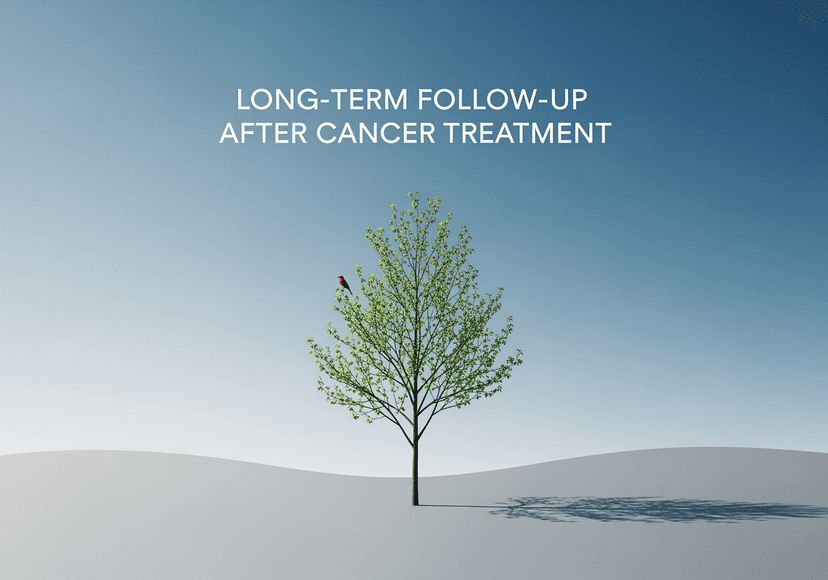
Long-Term Follow-Up After Cancer Treatment
Detailed insights into cancer treatment – doctors, hospitals, technology, recovery,

Healthtrip’s Transparency in Cancer Treatment Pricing and Packages
Detailed insights into cancer treatment – doctors, hospitals, technology, recovery,

Frequently Asked Questions About Cancer Treatment
Detailed insights into cancer treatment – doctors, hospitals, technology, recovery,

Advanced Robotic Technology Used in Cancer Treatment
Detailed insights into cancer treatment – doctors, hospitals, technology, recovery,

How Healthtrip Supports Foreign Patients for Cancer Treatment in India
Detailed insights into cancer treatment – doctors, hospitals, technology, recovery,

Top Medical Packages for Cancer Treatment Offered by Healthtrip
Detailed insights into cancer treatment – doctors, hospitals, technology, recovery,
